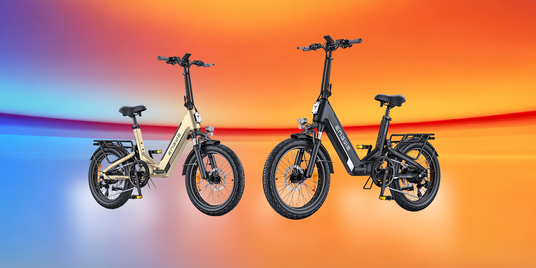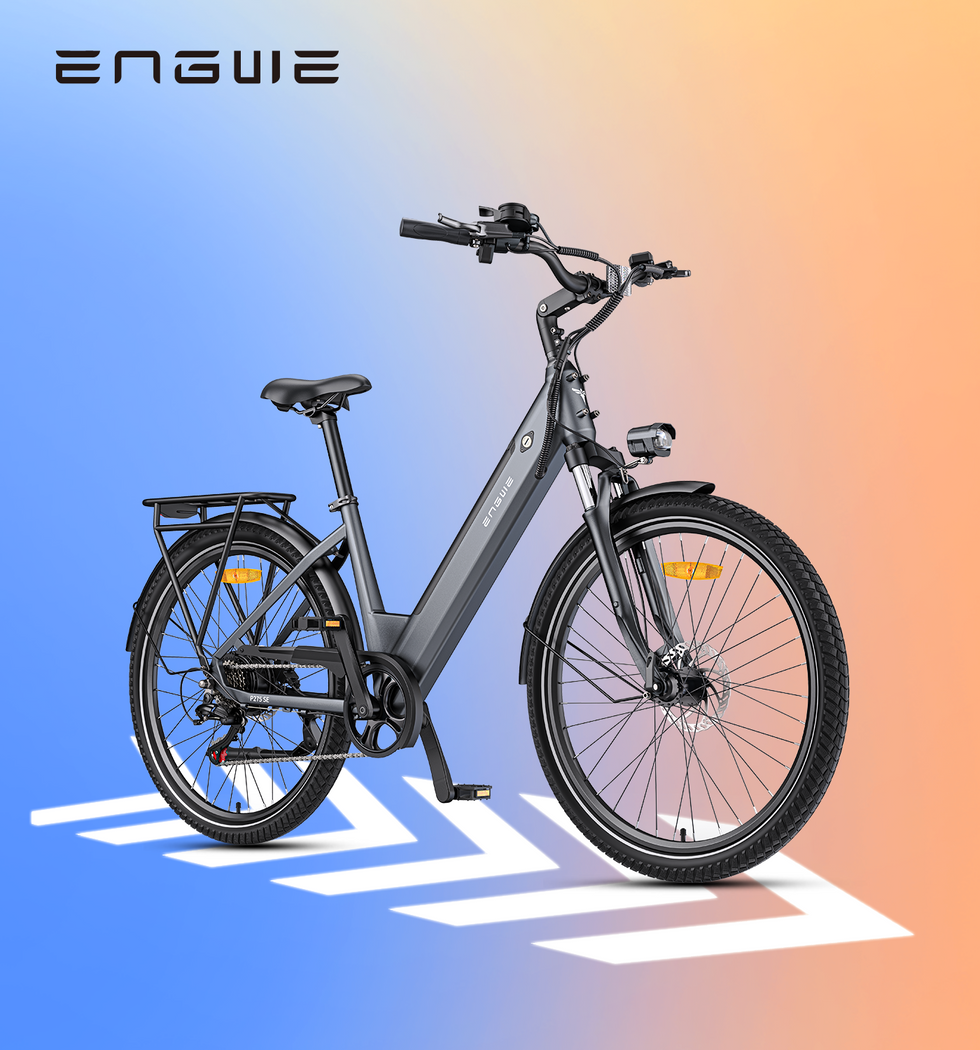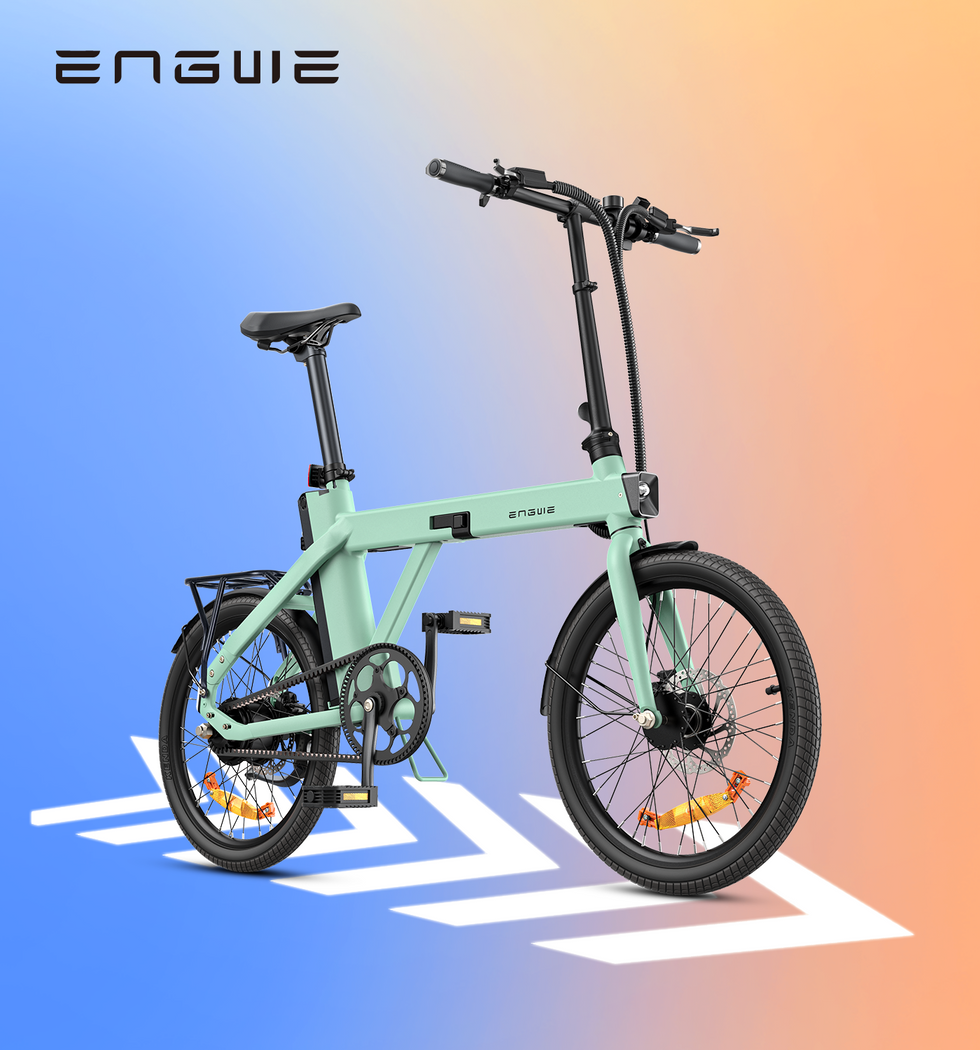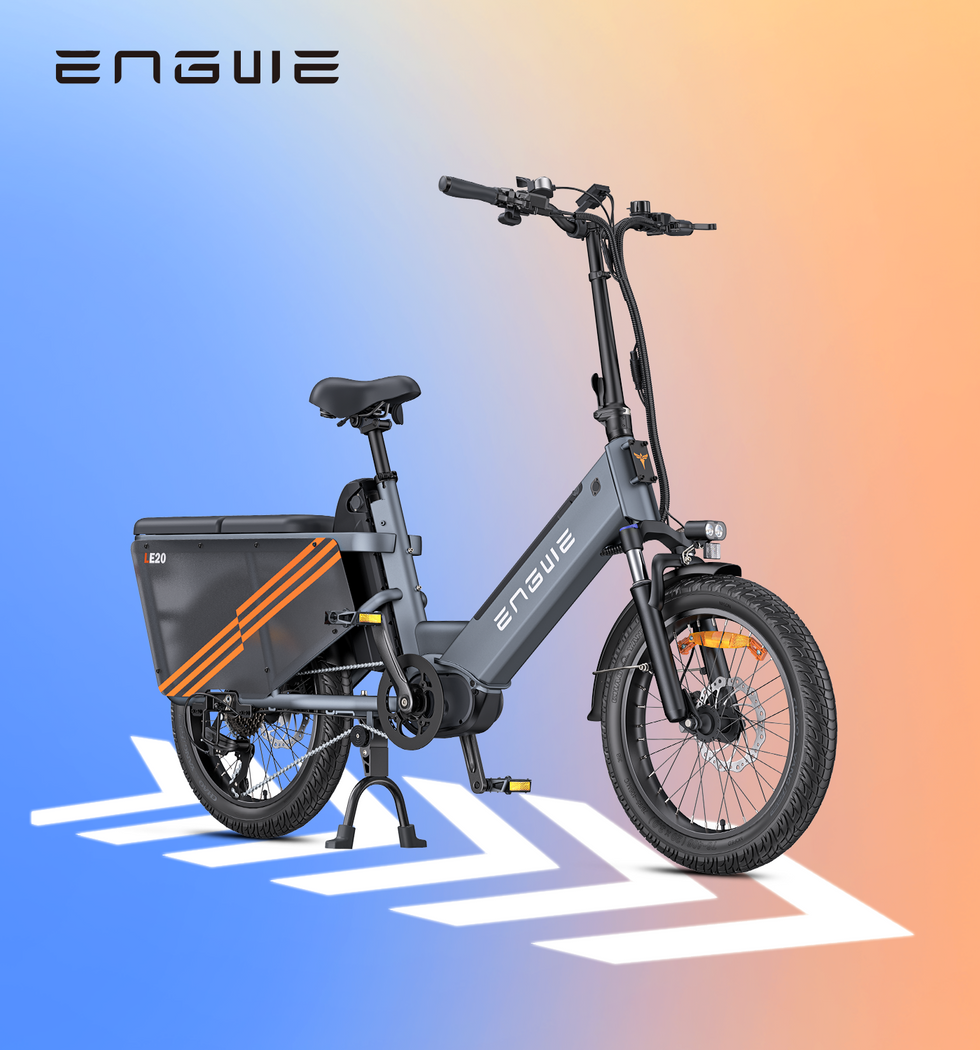It is reinventing our cities and the way we live our everyday lives. As the world looks for cleaner transport options, e-bikes came along and proved themselves as a force to reckon with, as well as an alternative mobility device we should look out for. But what turns an electric bike into an eco-vehicle after all? Well, the answer is more than just having a motor. An eco-electric bike is the smart choice for cleaner air, lower carbon emissions, and a better way of life. Enter this in-depth guide where we dive deep into the world of eco-electric bicycles to help demystify their real environmental advantages and how you can find those that better fit your green footprints & riding profile.
What Makes an Electric Bike "Eco"?
An electric bike, or e-bike, is essentially a bicycle with an integrated electric motor to help you pedal. While all e-bikes offer a greener mode of transport than cars by making no tailpipe emissions, a genuinely 'eco' electric bike is different from the rest in several respects, taken through from its manufacture to regular use and final disposal.
Production and Materials
The process of its existence has the most environmental impact on any product.
Frames: 6061 aluminum alloy is commonly found in the frames of eco-conscious e-bike brands. Aluminum is not only a lightweight and strong material, it is also highly recyclable—of course, with much less energy needed than for producing virgin metal.
Other components, including rubber tires and saddle materials, help add to the bike's overall eco-credentials.
Whenever electric bikes are manufactured, the battery is their heart. As a certain green model is also being planned, the choice of lithium-ion batteries was influenced by their long life (in number of charge cycles) and being made with high-quality cells – with good chances that they'll come from some well-known manufacturers. This way, the replacement has to be done less frequently. This will play into both the efficiency of the battery as well as its BMS (Battery Management System) and how efficiently those components use power, which in turn drives your range, and therefore your energy consumed per kilometer. Another big plus is the removable battery design, as it means a simplified charging experience and potential for easier recycling down the line.
Motor and Drivetrain Efficiency
The average 250W units in any road-legal UK e-bike are high-efficiency brushless motors, which means that they turn more of the electrical power into thrust and less into heat. This factor, connected to an advanced sensor system (especially a torque sensor), leads to more refined and natural power delivery from the motor. A torque sensor detects how hard you're pedaling and delivers assistance accordingly, which in theory should make for a gentler experience and, crucially, better efficiency of the battery's life.
Sustainability
One of the best ways to design for sustainability is to design a product that won't need repair in the first place. The eco-electric bike is an electric city bike that can be used daily. Made up of high-quality parts from major brands such as Shimano for its transmission and hydraulic disc brakes. High-quality, but repairable. Additionally, the whole lifetime and waste created by the bike is optimized as replacement parts for the complete bike are economically produced locally from local sources.
Answers to The Top 5 Questions About Eco Electric Bikes
The nuts and bolts of eco-friendly transport bring lots of questions. Answering some of the more detailed questions by potential riders, here are another five.
Do electric bikes actually have a greener footprint compared to regular bikes?
This is a nuanced question. From a manufacturing perspective, a regular bike has less of an environmental impact simply because it does not have a battery, motor, or electronics, which are really hard to recycle. But, riding an electric bike itself provides one of the best environmental savings by replacing more carbon-intensive car journeys. Having electric assist means you can tackle longer commutes, steeper hills, and stronger headwinds without arriving quite so knackered. This means e-bikes have a much wider potential to replace car trips than a regular bike. The environmental impact of manufacturing a battery is outweighed many times over in the life of a bike using that power to provide alternatives to journeys that would otherwise be carried out by car.
What to seek in an environmentally friendly battery?
Think about three basic concepts: capacity, quality, and time. A greater capacity (in Amp-hours or Ah) usually leads to an extended range, which means you are able to take more trips before requiring a recharge. Batteries containing cells made by top-tier manufacturers (such as Samsung, LG, or Panasonic) tend to perform better and last longer. The battery must also feature a sophisticated Battery Management System (BMS), which guards against overcharging, deep discharging, and overheating—all of which could hurt its long-term health. Lastly, see if the brand has a battery recycling plan or policy in place, as this is an indicator of end-of-life responsibility.
How much does frame material affect the eco-credentials of the bike?
Frame material affects the eco-credentials of the bike a fair amount.
Frame — The largest piece; the material of this is crucial. It is for its very good strength-to-weight properties and easy recycling that aluminum is so extensively chosen.
Steel: Heavy and durable, steel is another metal that should be highly recyclable.
Carbon Fibre: Lightweight and ultra-strong, carbon fibre is a material of choice in high-performance racing but tends to be more energy-intensive to produce and also notoriously hard to recycle, making it less of an eco-friendly choice for the average rider.
If a brand is upfront about using recycled aluminum in its frames, it is definitely showing signs of having green credentials at heart.
But how can I improve the eco-friendliness of my own e-bike use?
It also depends on how you as a rider act…
Tip 1: Harness the Power Of Pedal Assist Levels. Similarly, if level ground is ahead of you, dropping to PAS 0 to 2 will save a lot of battery and give you more range.
The next tip is to always care for your battery by not keeping it at 100 percent or 0 percent and storing it at room temperature.
Thirdly, maintain your bike. Regularly check tire pressure and condition, as properly inflated tires can reduce rolling resistance, making your ride more efficient. The drivetrain is a system, and if one part of the system fails to do its job properly, then all else will follow. This is kept in check by ensuring that your chain is clean and lubricated, which helps the drivetrain run as smoothly as it should be. By repairing and servicing your bicycle, you extend its life and thus help in reducing its disposal.
Are there any UK-specific rules for eco bikes?
To be classed as a normal bicycle in the UK, electric bikes have to adhere to the Electrically Assisted Pedal Cycle (EAPC) regulations. This makes them a non-motorized vehicle and therefore not subject to any license, tax, or insurance. The main rules are that the motor can have a max continuous power of 250 watts and that electric assistance must be delivered only until the bike reaches a speed of around 25 km/h (~15.5 mph). The e-bike has to be pedal-assist only, so no “twist and go” throttles that work independently of you pedaling. By sticking to the rules, you can make sure your bike is UK road and cycle path ready.

Choosing Your Best Eco Electric Bike
Finding the right eco-electric bike starts with identifying the right features for your lifestyle and sustainability preferences.
Evaluate Your Main Utility
Is this to be for daily 10 km travel to and from the office, a quick bike for some peaceful Saturdays near canals, or will you be utilizing it consistently for carrying your weekly Tesco shopping? For a city commuter, the bike will be about comfort and so likely an upright riding position, mudguards, and a pannier rack or front basket. E.g., a bike for leisure could prioritize larger volumes of storage and a bigger battery in order to ride farther off the beaten track. The first step is to identify your primary use case.
The Bike Comes First
In an urban environment, and depending on the types of terrain you tackle, a bike with a smart torque sensor can make all the difference in how it rides and feels. This matches motor output with the force you're putting through the pedals, translating into a natural and intuitive ride that also keeps battery life optimal. It's much more efficient than basic cadence-based sensors that just give you a fixed amount of power every time you turn the pedals.
Review Battery Range and Realistic Practicality
The manufacturer's claimed range may seem like enough on paper; however, bear in mind this is often going to be under ideal riding conditions (e.g., using the lowest pedal-assist level on flat roads). Realistically, be thinking about the stated range for upper assist levels. Practicality is key, and you need to be able to charge it easily inside your home or office, without the need, of course, to bring the whole bike inside. You can only do this with a removable battery.
Check The Build Quality And Components
A sustainable choice is a lasting one. Inspect the specifications of components from quality manufacturers. For example, a gear system by Shimano is known for its durability and assures you of hassle-free shifting over the years. As such, high-performance hydraulic disc brakes delivering powerful and controlled stopping power in all weather conditions are critical safety and durability benefits.
Top Brands for Eco-Conscious Riders
Although many brands make an electric bike, some are designed to offer you everything that a consumer who is conscious of the environment and price would want — making it easier to keep your wallet topped up and save a bit on carbon at the same time.
Engwe
Engwe is a well-known brand that has placed an emphasis on feature-rich, reliable, and accessible e-bikes to replace car journeys in an urban environment. But their strength also lies in combining hi-tech with practical, everyday designs. The Engwe P275 SE City E-Bike is an example of a model that shines in this area. The bike is built from scratch for the environmental city worker. Made around a lightweight 6061 aluminum alloy frame, the bike runs on a 250W brushless motor. But the real difference here is in the e-SATS AI algorithm that uses Engwe's ultra-high-level smart torque sensor – making for one of the smoothest, most responsive e-bike rides we've experienced that's up there as well with high-performance offerings. This clever system allowed running the 36V 13Ah removable lithium-ion battery to a max range of up to 100 km in one full charge. Rider comfort comes first, emphasized through a Dutch-style upright riding position, adjustable stem, and ergonomic swallow handlebar. It features a SHIMANO 7-speed transmission system and powerful 160mm front and rear hydraulic disc brakes for all-weather use. In addition to features like the included fenders, kickstand, smart app connectivity, and sturdy front basket that make it a well-rounded transport solution for daily use. This is an excellent commuter electric bike for the riders out there seeking a highly efficient, comfortable, and technologically advanced electric bicycle for an eco-friendly green commute.

Raleigh
Raleigh has a long and distinguished history in the world of British cycling, making an electric bike range that fuses old-school design with 21st-century tech. Their models are the most comfortable and durable out there, making them a great option for leisure riders and commuters that want timeless looks.
Cube
This German brand is known for their immaculate engineering and performance-driven designs. The German company has a massive line-up of e-bikes, ranging from city commuters to high-powered mountain bikes, nearly all of which use the highly effective and dependable Bosch drive systems.
Specialized
Specialized is a brand that sits on the high-end of the market, with its specialization in forward-thinking. But it's their Turbo line of e-bikes where they really set themselves apart for high-end performance and design.
VanMoof
Born of a love affair between men and technology, the VANMOOF was born to be an extension of your iPhone. Because of their attention to anti-theft, integrated and neat design, along with a D2C business model, they became popular in many design-conscious cities.

How To Make The Most Of Your Eco Electric Bike's Battery Life
Becoming the owner of an eco-electric bike is like starting a long-lasting relationship with nature. Here are the must-follow things to maximize its life and minimize its environmental impact.
This means not leaving a battery on the charger for days after it is fully charged if you want to help your battery last longer. Also, avoid letting the battery completely drain. If you expect to have the bike stored for weeks at a time, leave the battery between 40 and 60 percent charged.
Keep It Clean: A happy bike is a clean bike. Clean the frame on a regular basis, and do not forget to wash and lubricate the chain really well. Protecting the drivetrain from succumbing to wear and tear is ideal.
Store It Safely: Protect your investment from would-be thieves and the elements. It is best to store the e-bike indoors. Since cold and heat are the culprits of battery performance — also, longevity — it's best not to leave your battery in a freezing shed for months or baking in the summer sun all day.
Book in a Yearly Service: Your e-bike is sort of like its own little car — it will benefit from a professional tune-up every year. A bike mechanic will assess the brakes, gears, motor connections, and wheel truing, catching minor problems before they become big ones.
You Can Start Your Journey to Sustainable Travel Here
Purchasing an eco-electric bike is not just about buying a product; it's about making a statement. It is a down payment on your health, your local air quality, and a step to save the planet. If you can see past the motor and consider the choice of material, battery technology, and general longevity, then you may be able to choose a bike that provides genuine sustainable utility. The correct eco-electric bike could change the way you travel to work and bring about new freedom that does it all with a smile and keeps our corner of the world in order.



